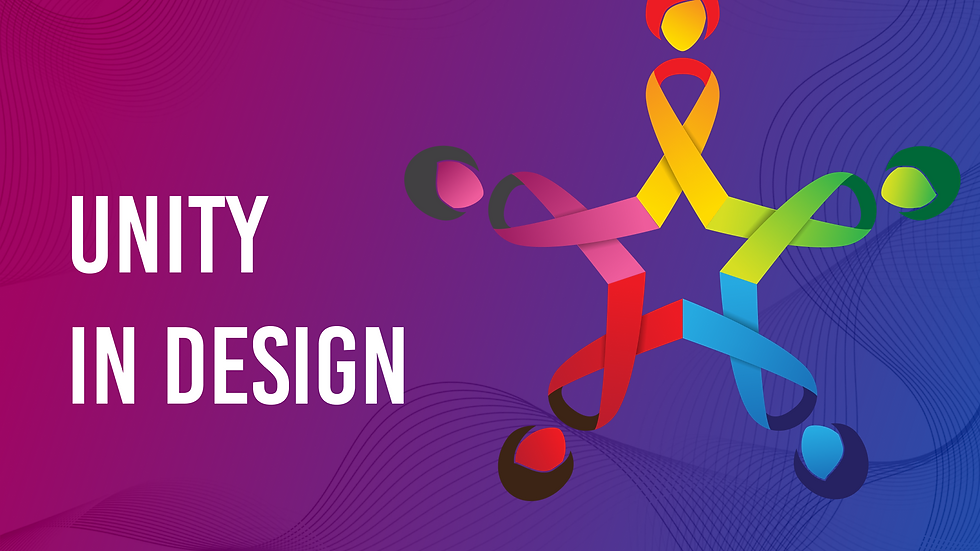Achieving Harmony: The Essence of Unity in Design
- Rohit Kumar Verma
- Apr 12, 2024
- 2 min read

In the vast landscape of design, amidst the diversity of styles, themes, and mediums, one principle stands as a beacon of coherence and harmony—unity.
Understanding Unity
Unity, in the context of design, refers to the cohesive relationship between all elements within a composition. It involves the seamless integration of various design elements—such as colour, typography, imagery, and layout—into a unified whole. Rather than standing alone as isolated components, these elements work together harmoniously to convey a singular message or evoke a specific emotion.
The Significance of Unity
Unity plays a fundamental role in design for several reasons:
Visual Cohesion: Unity creates a sense of visual cohesion, where every element feels purposefully integrated and contributes to the overall aesthetic. This cohesiveness enhances the readability, clarity, and impact of the design, making it more compelling and memorable.
Consistency and Branding: Unity is essential for maintaining consistency across different design assets and establishing a strong brand identity. By adhering to a unified visual language—such as colour palette, typography, and imagery—designers can reinforce brand recognition and build trust with their audience.
Enhanced User Experience: In user interface (UI) and user experience (UX) design, unity ensures a seamless and intuitive user experience. Consistent design patterns, layouts, and navigation elements create familiarity and help users navigate the interface more effectively, enhancing usability and satisfaction.
Emotional Impact: Unity can evoke powerful emotional responses by creating a cohesive visual narrative. Whether through harmonious colour schemes, cohesive imagery, or consistent typography, unified designs resonate with viewers on a deeper level, fostering connection and engagement.
Achieving Unity in Design
Creating unity in design requires careful consideration and attention to detail. Here are some strategies to achieve unity:
Establishing a Visual Hierarchy: Define a clear visual hierarchy that guides the viewer's eye through the design, highlighting key elements and organizing content in a logical manner.
Maintaining Consistency: Ensure consistency across all design elements, including color, typography, imagery, and layout. Use predefined style guides and design systems to maintain uniformity and coherence.
Balancing Contrast and Harmony: Strike a balance between contrast and harmony to create visual interest without sacrificing unity. Contrast can draw attention to key elements, while harmony ensures that the overall composition remains cohesive.
Fostering Gestalt Principles: Apply Gestalt principles—such as proximity, similarity, and continuation—to create natural visual connections between elements and reinforce unity within the design.
Conclusion
Unity is the cornerstone of effective design, bringing together disparate elements to form a cohesive and impactful whole. Whether designing websites, branding materials, print publications, or digital interfaces, the pursuit of unity guides designers in creating compelling and memorable visual experiences. By fostering harmony, coherence, and consistency, unity elevates design from a mere arrangement of elements to a meaningful expression of creativity and purpose. Embrace unity, and unlock the true potential of your design endeavors.



Comments